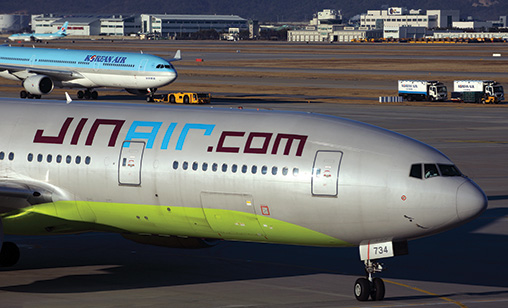Year in Review
Asia-Pacific low-cost carriers maintain head of steam
December 1st 2018
If anyone thought the rush to launch Asia-Pacific airlines was losing impetus they should think again. Read More » At least seven prospective carriers have announced plans to launch in the next 12 to 18 months.
The biggest stampede to the region’s runways is in South Korea, home base to six low-cost airlines.
 |
South Korea’s Transport Ministry confirmed last month four budget carrier applicants, - Fly Gangwon, Aero K, Air Premia and Air Philip - have applied for business licenses in response to a government initiative to add more LCCs to the nation’s airline fleets. A fifth prospective operator, Guardians, was reported to be ready to progress to a licence application.
New regulations in South Korea require launch airlines to have seed funding of US$26 million and five aircraft before they can be granted an Aircraft Operator’s Certificate (AOC). The previous requirements were $13 million and three aircraft.
At press time, Jeju Air ordered 40 B737 MAX 8 aircraft with options for ten more of the type. The deal, valued at list prices of US$5.9 billion, is the largest order to be placed by a South Korean LCC.
Elsewhere in the region, Vietnam’s Bamboo Airlines has received its licence to fly and Air Astana has stated its intention to launch a subsidiary LCC, FlyArystan, mid next year.
Bamboo Air, a hybrid carrier, said its goal was to fly 100 routes, including to lesser-traveled destinations in Vietnam and elsewhere in Asia as well as North America. The airline’s founder, FLC property to tourism tycoon, Trinh Van Quyet, said the planned airline had committed for 20 B787s, worth an estimated $5.6 billion and intended to spend another $3.2 billion on 24 A321neo.
Air Astana’s new LCC will begin operations in mid-2019 with four A320s in an all-economy, 180-seat configuration. Chief executive, Peter Foster, said the fleet would grow to at least 15 airplanes by 2022.
Plans call for FlyArystan’s network to serve new and present routes now flown by Air Astana.
LCCs hold 55.5% of domestic marketing in South Korea, up 270 times compared with 13 years ago when the first domestic LCC flight by T’way Air was launched. The budget sector is making deep inroads onto international routes. A report from the Korea Transport Institute said LCCs in South Korea will see their international passenger traffic soar nearly 20% year in 2019, to 30.4 million passengers. In the past five years, LCC performance in terms of international traffic has grown an average of 40% annually. “Budget carriers’ rapid growth may continue in the coming year thanks to efforts to boost their international passenger traffic capacity by diversifying routes,” the report said. In contrast, local full-service carriers are projected to suffer stagnant growth in their international passenger traffic. |